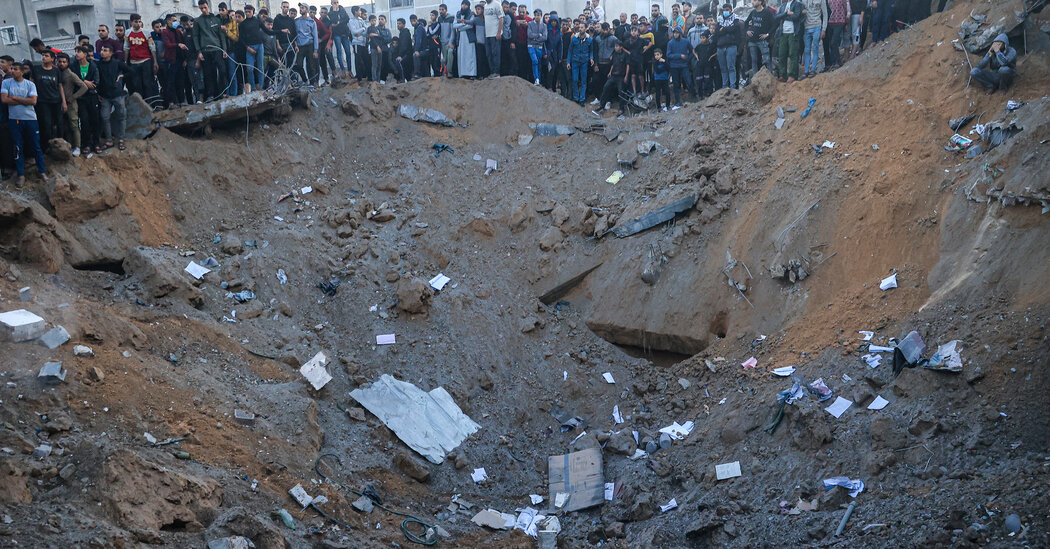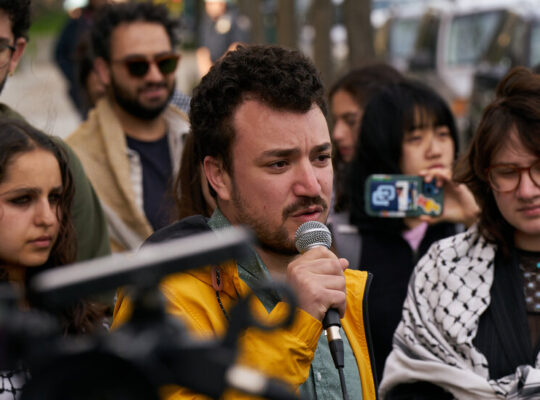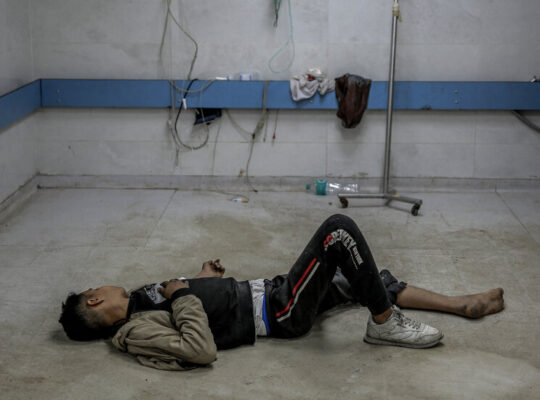Amid a barrage of airstrikes, Israel sharply expanded its evacuation orders in the Gaza Strip on Sunday in preparation for an expected ground invasion in the southern part of the territory.
The new orders, coming three days after the collapse of a weeklong truce, sowed confusion and fear among Gaza residents, some of whom have already been displaced at least once before.
Images from Gaza on Sunday showed plumes of dark smoke rising above a rubble-covered landscape and bloodied children wailing in dust-covered hospital wards. Mourners stood beside rows of bodies wrapped in white sheets.
Late Sunday night, a military spokesman, Rear Adm. Daniel Hagari, said Israel “continues and expands its ground operations against Hamas strongholds all across the Gaza Strip,” but did not elaborate.
Military officials declined to comment on whether Rear Admiral Hagari’s comments meant an Israeli ground invasion of the south had begun.
Ashraf al-Qudra, a spokesman for the Health Ministry in Gaza, said Israeli airstrikes had killed more than 15,500 people since Oct. 7, when Israel began its assault after Hamas militants crossed the border into Israel and killed 1,200 people.
The Israeli military said over the weekend that it had approved plans for a larger ground invasion. Israeli forces have already taken control of large parts in and around Gaza City following a ground invasion from the north. The Times of Israel quoted Israeli officials saying on Sunday that the Israeli military had launched 10,000 airstrikes since the initial ground invasion.
John F. Kirby, the spokesman for the U.S. National Security Council, defended the Israeli military on Sunday, saying he believed “they have been receptive to our messages here of trying to minimalize civilian casualties.”
“There’s not a whole lot of modern militaries,” Mr. Kirby said, that would “telegraph” their actions, referring to Israel’s evacuation orders to civilians. “So they are making an effort,” he said on “This Week” on ABC.
But other American officials delivered warnings over the weekend about the way the Israeli military is prosecuting the war.
Vice President Kamala Harris, on a visit to Dubai, said Israel “must do more to protect innocent life.” And Defense Secretary Lloyd J. Austin III said his experience waging war in urban areas of Iraq had taught him that “you can only win in urban warfare by protecting civilians.”
“If you drive them into the arms of the enemy,” Mr. Austin said at a gathering of defense officials in California, “you replace a tactical victory with a strategic defeat.”
President Emmanuel Macron of France delivered a similar message during a news conference in Dubai on Saturday.
“I think we are at a moment where the Israeli authorities need to define more precisely their objective and the end goal,” Mr. Macron said. “The total destruction of Hamas — what does that mean? And does anyone think that it’s possible?”
Ron Dermer, Israel’s minister of strategic affairs, insisted on Sunday that it was, but acknowledged that destroying Hamas, which controls Gaza, would take time. “I don’t know how long it’s going to take,” he said on “This Week.” “I don’t know if it’s going to be months.”
Mr. Macron said there was no doubt that Hamas was a terrorist organization, but that if the goal was to erase it, “the war will last 10 years.”
“There will be no lasting security for Israel in the region if that security is achieved at the cost of Palestinian lives, and therefore the resentment of public opinion in the region,” Mr. Macron said.
Photos on Sunday showed the aftermath of the weekend’s airstrikes: a woman gingerly picking her way into what used to be someone’s living room, the cushions of its overstuffed brown sofa ruptured; a small girl holding a small boy, both their faces smudged with blood, their hair white with dust; a man half-collapsed on the steps of a morgue, kept from falling over by two other men, his face contorted with grief as he looks over a row of shrouded bodies.
The Israeli military said it had carried out airstrikes on Friday and Saturday against more than 400 targets across the Gaza Strip.
Hospitals in the south were under increasing pressure. On Saturday, a team from the World Health Organization visited a hospital in the city of Khan Younis that was three times over its capacity, according to the agency’s head, Tedros Adhanom Ghebreyesus.
“Countless people were seeking shelter, filling every corner of the facility,” he wrote on X, formerly Twitter. “Patients were receiving care on the floor, screaming in pain.”
The list of areas ordered evacuated in southern Gaza swelled to 34 on Sunday, all clustered southeast of Khan Younis, from 19 the previous morning. The Israeli military marked each on a map of Gaza that divided the territory into nearly 2,400 blocks, advising residents to pay attention to Israeli announcements about whether their block was being evacuated.
“Dear residents of Gaza, obeying evacuation instructions is the safest way to preserve your safety, your lives and the lives of your families,” Israel’s military wrote on Arabic-language accounts on Facebook and X on Sunday.
But Gazans and international aid agencies said Sunday that the latest round of Israeli announcements were prone to change with almost no notice, leaving many civilians confused and with little time to flee.
“I cannot overstate the fear, panic & confusion that these Israeli maps are causing civilians in Gaza, including my own staff,” Melanie Ward, head of the humanitarian organization Medical Aid for Palestinians, said on X. “People cannot run from place to place to try to escape Israel’s bombs.”
The Israeli military’s evacuation map showed big orange arrows directing people toward already-overflowing shelters or what it called the “humanitarian zone” in Al-Mawasi, an agricultural area near the Mediterranean Sea.
But it was far from clear that the zone provided sufficient supplies or shelter, with some Gazans who fled there describing little awaiting them and no visible presence of humanitarian aid. Last month, U.N. agencies and other groups said that they would not participate in setting up any so-called safe zones in Gaza because those zones could not really protect civilians.
Even as Israeli troops seek to gain more ground, wresting control of Gazan territory from Hamas, the battle continues for control underground. Israeli forces have located 800 shafts of underground tunnels and destroyed approximately 500 of them, Rear Admiral Hagari, the spokesman, said Sunday on X.
He posted a video of troops detonating explosives in three tunnel shafts, sending blasts of the sandy soil of Gaza into the sky.
Reporting was contributed by Yara Bayoumy, Ameera Harouda, Aishvarya Kavi, Talya Minsberg, Iyad Abuheweila, Peter Baker and Karoun Demirjian.












